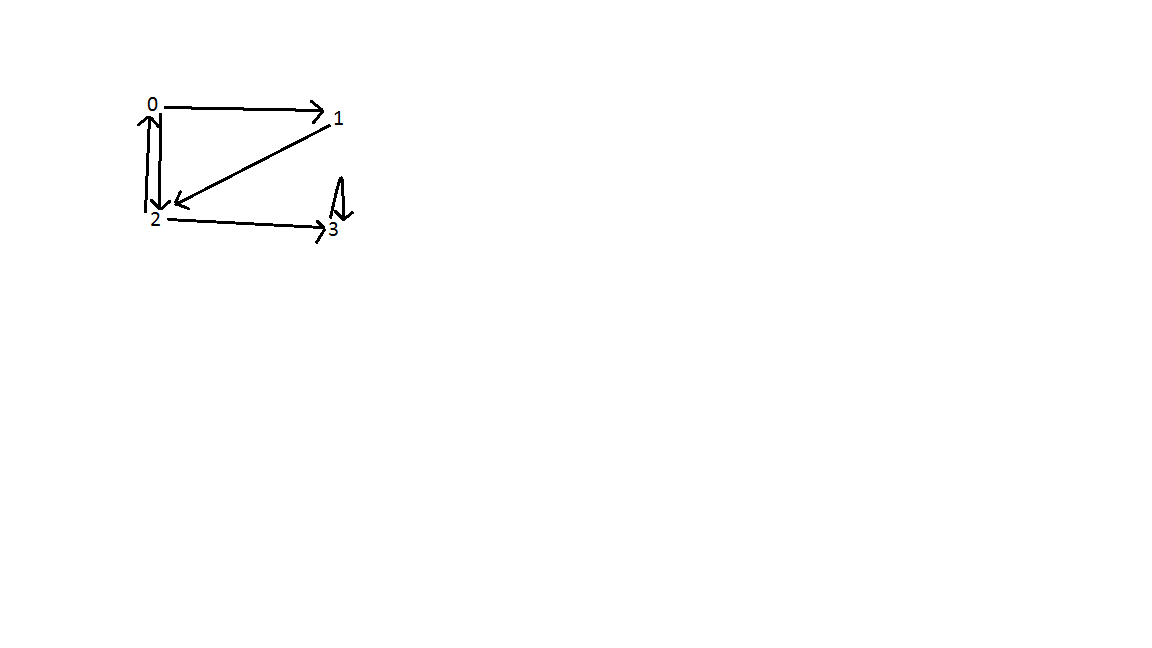Detecting a cycle in a directed graph using Depth First Traversal
suggest changeA cycle in a directed graph exists if there’s a back edge discovered during a DFS. A back edge is an edge from a node to itself or one of the ancestors in a DFS tree. For a disconnected graph, we get a DFS forest, so you have to iterate through all vertices in the graph to find disjoint DFS trees.
C++ implementation:
#include <iostream>
#include <list>
using namespace std;
#define NUM_V 4
bool helper(list<int> *graph, int u, bool* visited, bool* recStack)
{
visited[u]=true;
recStack[u]=true;
list<int>::iterator i;
for(i = graph[u].begin();i!=graph[u].end();++i)
{
if(recStack[*i]) //if vertice v is found in recursion stack of this DFS traversal
return true;
else if(*i==u) //if there's an edge from the vertex to itself
return true;
else if(!visited[*i])
{ if(helper(graph, *i, visited, recStack))
return true;
}
}
recStack[u]=false;
return false;
}
/*
/The wrapper function calls helper function on each vertices which have not been visited. Helper function returns true if it detects a back edge in the subgraph(tree) or false.
*/
bool isCyclic(list<int> *graph, int V)
{
bool visited[V]; //array to track vertices already visited
bool recStack[V]; //array to track vertices in recursion stack of the traversal.
for(int i = 0;i<V;i++)
visited[i]=false, recStack[i]=false; //initialize all vertices as not visited and not recursed
for(int u = 0; u < V; u++) //Iteratively checks if every vertices have been visited
{ if(visited[u]==false)
{ if(helper(graph, u, visited, recStack)) //checks if the DFS tree from the vertex contains a cycle
return true;
}
}
return false;
}
/*
Driver function
*/
int main()
{
list<int>* graph = new list<int>[NUM_V];
graph[0].push_back(1);
graph[0].push_back(2);
graph[1].push_back(2);
graph[2].push_back(0);
graph[2].push_back(3);
graph[3].push_back(3);
bool res = isCyclic(graph, NUM_V);
cout<<res<<endl;
}Result: As shown below, there are three back edges in the graph. One between vertex 0 and 2; between vertice 0, 1, and 2; and vertex 3. Time complexity of search is O(V+E) where V is the number of vertices and E is the number of edges.

Found a mistake? Have a question or improvement idea?
Let me know.
Table Of Contents